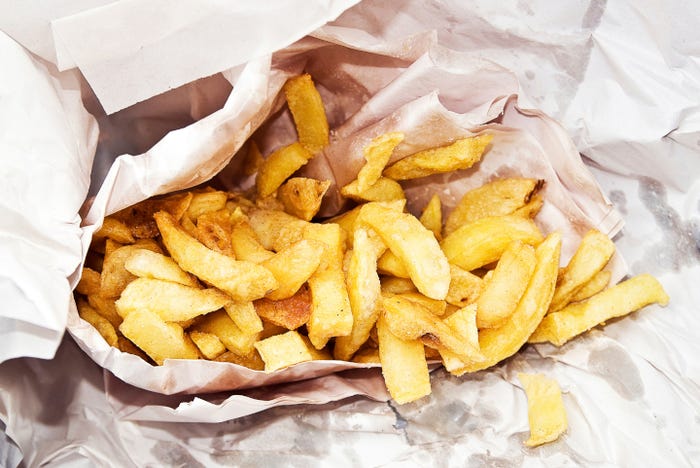Is the Future of Pet Food Packaging PFAS-free?
Here are four key learnings about these chemicals of concern that pet food packaging professionals can appropriate from the foodservice industry.

The concern over use of “forever” chemicals in packaging has migrated to the pet food industry and the storyline looks a lot like the foodservice industry circa 2018. In fact, if we study the history close enough we can extract key learnings to help pet food brands approach the issue from a better vantage point.
A recent news cycle reported on a study by the Environmental Working Group (EWG) that covers the potential of PFAS use in pet food packaging. The study drew attention to the issue and put a few popular brands in the hot seat. While the testing indicated fluorine was present in high amounts, it only tagged the presence of fluorine; the test did not determine the specific fluorinated chemistry used. Additional testing will be required to further understand the fluorinated chemistry present in the pet food packaging items tested.
What are PFAS anyway? Per- and polyfluoroalkyl substances, or PFAS, refer to a general class of fluorochemicals, some are specifically used to help make food packaging and other products achieve moisture, grease, and stain resistance. Today, there are 15 short-chain PFAS chemicals deemed by the FDA as safe for direct use in food-contact applications. Short-chain PFAS typically refers to a class of chemical structures with six or less carbon chains, and were popularized to replace the long-chain eight carbon class products around 2016. However, new research indicates even trace amounts of any PFAS chemical class can pose a potential health risk to consumers and pets alike when used in food or pet food packaging.

As pet food brands begin to consider the issue, there are important lessons to learn from the rise and fall of PFAS use in food packaging. The last seven years particularly suggest a similar path the pet food industry can take to phase out PFAS use in pet food packaging.
The outcome of events in the foodservice industry indicates PFAS will be short-lived in food packaging and will no longer be available for use by the end of 2025. The North American market took lead on this issue, and now -more regions in Europe are enforcing similar bans on PFAS use in food packaging. When global markets start to align on an issue, the future becomes pretty clear.
So, what does this mean for the pet food industry? Will the future of pet food packaging be PFAS-free? If the foodservice industry is any indication, yes! Brand owners and packaging manufactures have the opportunity to invest in PFAS-free solutions now.
Innovation does not happen overnight. Development for alternatives with the same functionality can take at least one to three years to create, commercialize, and scale.
Before starting on a path to PFAS-free, there are four key learnings we can take from the foodservice industry to help pet food brands and packaging manufacturers navigate their PFAS-free journey.
1. Focus on fitness for use.
The goal here is for packaging suppliers to determine the percent of customers who need PFAS to meet performance requirements. They should start with an audit of their customer database and review what PFAS attributes are needed to meet each customer’s specific packaging requirements.
Similarily, packaging departments should segment their product packaging according to needed PFAS attributes — such as water resistance, oil resistance, and moisture resistance — and levels of strength — high, medium, low. This exercise will help them prioritize solutions, R&D, market segments, and strategic brands that may be at risk.
2. States and municipalities accept alternative solutions.
The speed of PFAS ban adoption in more states and regions could be poised to move even faster now that laws will be effective in key coastal regions New York and California come the end of 2022. And these states, like a several others, have bypassed alternative assessments clauses.
Early adopters of PFAS-bans pre-2020 required assessments on available market alternatives. This is not the case for New York and California — and indicates this will be a more common model moving forward. It is important to keep in mind PFAS inventory exposure for packaging suppliers considering the effective ban dates. Customer timelines will be sooner than the effective ban date to meet compliance, so packaging suppliers should be prepared to support inventory transitions early in the process.
3. Proactively deplete existing PFAS inventory.
Based on industry research, it does not appear sell-off provisions are written into the early adopted laws. Some would argue there was ample time to deplete PFAS inventory. Nonetheless, most state laws indicate hard cut-off dates for their PFAS bans. This can become a logistic challenge, especially for those distribution networks serving multiple regions or located on state borders. To deplete existing PFAS inventories, the safest course of action may be for packaging suppliers to move inventory to distribution centers that are not impacted by regional bans.
4. Free-of PFAS products could cost a premium.
In some cases, innovation goes beyond new chemistry and includes breakthroughs in processes and equipment. Often when these three instances combine, it can raise the cost of manufactured goods, and this can lead to PFAS-free solutions costing more when compared to the incumbent PFAS products. This is especially true in scenarios where the PFAS fitness for use is maintained in the new Free-Of version. When this holds true, and packaging suppliers can deliver the performance needs (or better) in a safer package, the price premium has more justification.
Packaging is approaching a new world and will have a new compass to navigate development, one that combines strong environmental responsibility with legislation. As brand owners and packaging manufacturers begin their PFAS-free journey, start with the end in mind. Design PFAS-free products with end-of-life intentions, work with supply chains upstream and downstream to prepare for varied timelines, partner with organizations to get ahead of future restricted substances, and offer transparency in your efforts. Keeping quiet on the issue is not a strategy.
Let’s face it, PFAS have uniquely favorable properties for use in packaging. However, if certain classes pose environmental risks, the totality of the substance’s impact needs to be considered — for our human consumers and their pets.
About the Author(s)
You May Also Like




